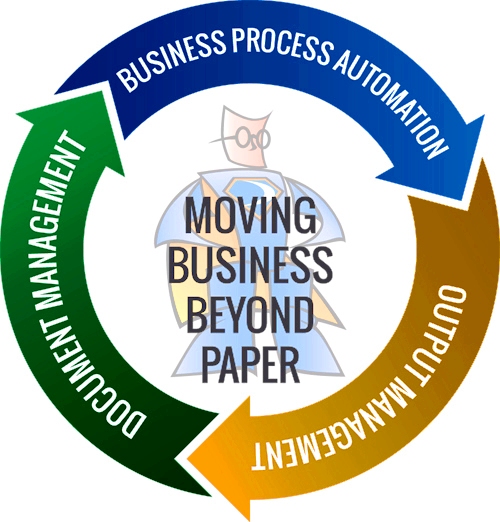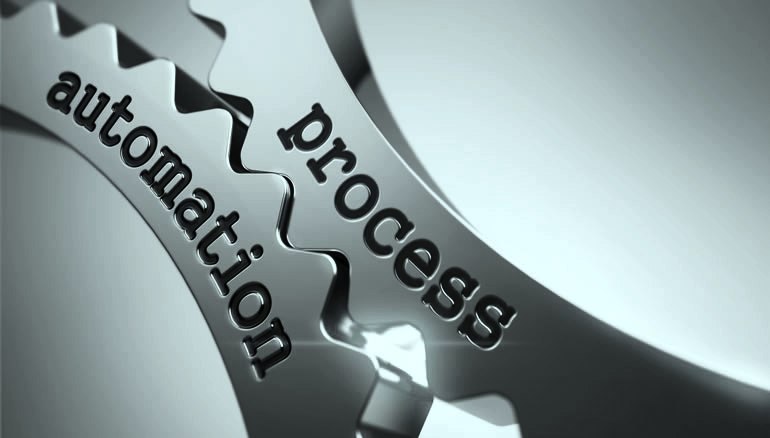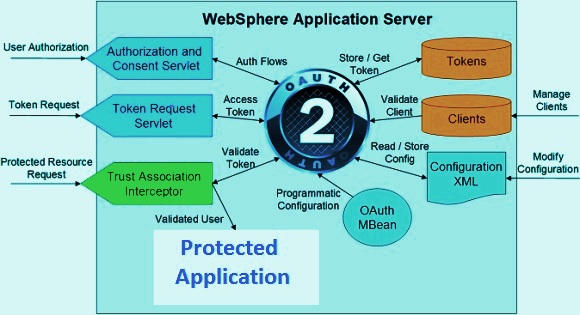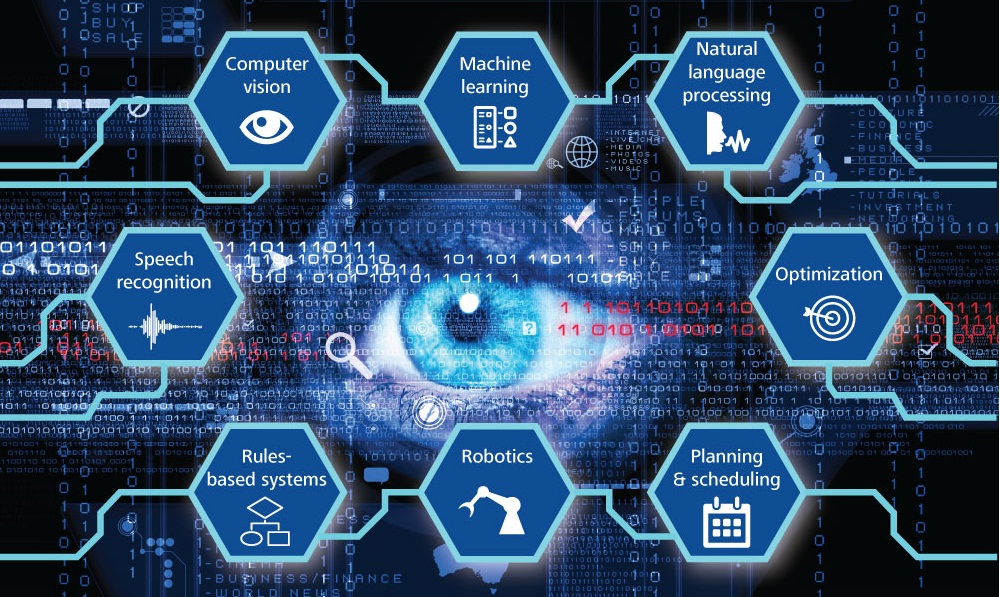


Today, customers are looking for the best than the better in everything and want it quick along with seamless digital experience, so will it happen, but how?
Let us look how digital experience and digitalization will help us improve our business.
We should thank companies like; Apple and Amazon who anticipates that every organization should deliver products and services rapidly, with a seamless user experience.
Consumers are looking for the ablity to login to their electricity account and check their electricity consumption online. They go to the telecommunications dealer and to buys a smartphone and expecting it to activate instantly. They even looking at the banks to approve their personal or mortgage loan instantly. They expect instant approval of services whether it private/public sector.
They even wonder why they need to provide identification proofs and financial statements to the banks when their employer is crediting their pay checks every month on-time.
Customers are demanding for instinctive interfaces, , personalized treatment, persistency and consistency, real-time accomplishment, negligible errors and 27/7 availability. This behavior of the consumers are changing rapidly they are looking for more comforts and customizations.
It’s more than a greater customer experience, nonetheless; when establishments get it right, they can as well tender aggressive pricing because of lesser overheads, enhanced and well equipped operational controls, with less risk.

Enchant the Customer
To catch hold of their consumer expectations organizations must gear up the process of digitization of their business. But it should be more that the automating a current process. Organizations must rethink to reinvent the operations process, including a quick decision making strategy, permit the less number of required steps, speeding up the documentation process parallel efforts should be taken with fraudulent and regulatory issues.
Operating models, skills, organizational structures, and roles need to be redesigned to match the reinvented processes.
Operating models should be accustomed and redesign to facilitate customer insights better performance tracking capabilities, and decision making abilities. The process of Digitization often requires new skills combined with that old wisdom.
Nevertheless to say that There are huge benefits by the digitizing processes, companies can save cost upto 90% and TAT (turnaround time) enhanced by several orders of magnitude.
For example one financial institution digitized its mortgage application, assessment process decision making process, which gave the organization of ability to cut the cost per 70 percent and reducing the time to preliminary documents approval from numerous days to just in minutes process.
A telecom service provider can up with a system where customers get the feasibility to activate their new phones without the involvement of the backend department. Through digitization process insurance companies automatically arbitrate a large share of its simple claims. Upgrading from paper and manual process with software allows organizations to collect the required data automatically which also improves the process performance, while reducing the cost and risks. Digitization also helps manager to address the issues before they become critical. Supply chain quality issues can be acknowledged and resolved by monitoring purchaser business activities and feedback.
Many top organizations are reinventing their processes, testing the whole lot of things connected to an existing process and renovating it using cutting edge digital technology.
This approach is done through series of process combining advanced and traditional process, like lean and agile.
Hit Factors
Companies in every sector can gain knowledge from the practices conducted by other organizations that have implemented this successfully.
The process of Successful digitization implementation starts by developing a scheme for the future state for each process keeping aside the current constraints and reducing the turnaround time from days to minutes. Once the future scheme has been developed constraints will be revisited. Organizations should always focused to confront each constraint.
Recurrently checking the consumers experiences not only boost effectiveness in definite areas but also helps to address some burning issues. But this is not a complete recipe to deliver great user experience. To enrich the user experience the digitization team should receive spport from every corner involved in user experience.

Tackle the End-To-End Customer Experience
But it will never deliver a truly seamless experience, and as a result may leave significant potential on the table. To tackle an end-to-end process such as customer on boarding, process-digitization teams need support from every function involved in the customer experience.
To achieve this, some companies are creating cross functional and start up style units, which is way to involve all the stakeholders and users concerned with the end-to-end user experience. Members are often collaborated to achieve better lines of communication and guarantee a true team effort.
Build Capabilities
Resources on Digitization are in short supply, so successful portfolios put emphasis on construction in house capabilities.
The aim is to provide excellent service with highly skilled staff with the intention that can be called upon to digitization quickly. Organizations should hunt for faculty externally to meet the requirement for new roles, and skill sets, like user-experience designers and data scientists . To achieve this, managers selected in the first wave to pilot the transformation must be carefully picked, and he/she should be ready to commit with the organization for a long time well trusted in the organization,. It is also essential that the staff has the ability to build the necessary technology components in a high proficient way so that they can be able to be reused across processes, maximizing economies of scale.
Enter Blog Details here...
...
Read More

WebSphere Application Server is a software product which helps to perform the role of a web application server. WebSphere is a flagship product and a set of Java-based tools by IBM which allows customers to create and manage sophisticated business Web sites. It was originally created by Donald F. Ferguson, who later became CTO of Software for Dell and the first version was launched in 1998.
While the central WebSphere tool is known as WebSphere Application Server (WAS). WAS is an application server that helps the customer to connect Web site users with Servlets or Java applications. A Servlet is a Java program that runs on the server rather than on the user's application as Java applets do. Servlets are developed to replace the traditional common gateway interface (CGI) scripts. These scripts are usually written in C language, Practical Extraction or Reporting Language to run much faster and to control all other user requests that run in the same process space.
In addition to Java, WebSphere also supports the open standard interfaces such as Common Object Request Broker Architecture (CORBA) and Java Database Connectivity — JDBC. WebSphere is designed to use across different operating system platforms. You have an option of selecting the version suitable for your business purpose, as one edition of WebSphere will be offered for small to medium size businesses and another edition is for larger businesses with a huge number of transactions. It also has a Studio, which is a developer's environment added with additional components which allow creating web pages’ for a website and you can also the web pages accordingly. Both the versions support Solaris, Windows NT, OS/2, OS/390, and AIX operating systems.
While the WebSphere Studio includes a copy of the Apache Web server; which helps the developers to test Web pages and Java applications at any given time.
What is WebSphere?
The moment you ask this question, the first thing that strikes in your mind is WebSphere is an application server; but in reality, WebSphere is the name of the product in IBM family. IBM has many more products under the brand name WebSphere, here are some of them WebSphere Application Server, WebSphere MQ, WebSphere Message broker, WebSphere process Server, WebSphere business modeler, WebSphere business monitor, WebSphere integration developer, WebSphere partner gateway.
WebSphere Application Server Architecture
WAS is built using Open standards such as Java EE, XML, and Web Services. WebSphere application is supported on the following platforms; Linux, Windows, AIX, Solaris, IBM i and z/OS. It was started with Version 6.1 and the latest version is Version 8.5. While the open and standard specifications are aligned across all the platforms. Platform utilization is to an extent it takes place, but now it is done below across all open standard specifications line.
Security
The WebSphere Application Server security model is based on the services provided by the operating system and as per the Java EE security model. WebSphere Application Server provides implementations of user authentication and authorization mechanisms given that support for various user registries:
• Local operating system user registry
• LDAP user registry
• Federated user registry (version 6.1)
• Custom user registry
The authentication mechanisms supported by WebSphere are
...
Read More

The biggest question roaming around the industry is why one should go permanent rather than temporary? Well, there are many cons and pros defending the question; more to it the people in the room think that they may earn more with permanent positions along with many benefits. In some instances, this may be in another case. You have to look at the amount of work over a whole year and the bigger picture. While this might not always the best thing to jump into.
Taking a good break and moving in the right direction and up the ladder will definitely bring good progress in your career. This is what you see a lot in senior and permanent employees; who actually earn almost as much as they can from their professional and personal experience. More to salary; you will also entitle to have the below-mentioned privileges’ which include:

Here are few pros and cons of Temp Vs Perm
Temporary
Transparency & Flexibility

Most essential reasons most candidates look before they step in any organization is transparency and flexibility. Both of the reasons are cited by many candidates who are looking for Temp positions. The length of the projects they will be put in will give the exact picture about the time frame they will stay in the temporary project; but in addition, there are plenty of options like project contract extensions, holiday’s, flexibility in the working hours and more are attracting the jobseekers to opt for temp positions. Temp work is always a good option for those who want a bit of freedom and flexibility in their role.
Financial Opening

Temp work is not just about flexibility and transparency, but the financial opportunities for temp workers are high and potentially more compared to the permanent employees; even the employers don’t need to be anxious about sick pay, holidays or pensions, and paying cash free for daily rate while as in permanent positions.
Diversity & Practice

Many candidates like to opt for temp projects as they have diverse opportunities to go with and they can easily plan their lifestyle along with choosing the right fit role with good exposure. There are fewer politics to worry about and no need to think about the benefits that come of gaining experience with diverse employers. Here you will have ample of opportunities to pick and work with.
Employer’s Choice

The best reasons that the contract market continues to thrive today is - it’s great for employers too; they have a choice to pick the employee with their required requirements. With restrictions in their place, the hiring process for full-time is tougher than the temp positions. Filling the requirement for a certain period is manageable by offering good package and benefits. However, for many employers, the contract can be a good alternative; as contractors often find themselves in high demand.
Permanent
Association & Safety

Today if we see, many employees are looking for these two reasons which are associated with their jobs and provide them the safety they are looking in for. Close association and safety are two essential things for the employees in today’s work atmosphere. Both need to be closely associated with any kind of work you are going with. Most of the employees like to pick permanent jobs for good association and safety. Whether they’re actual or apparent these kinds of benefits are more usually associated with permanent roles than temp positions.
Getting Further

A permanent position is more defined than temp and often offer strong career path than contract roles with clear opportunities towards the advancement within the organization. Moreover, the permanent employees are more likely to make a choice on the rewards of their hard work on a project than temp, who may previously be on their next project when the approvals are handed out.
Secured Pay

While choosing the temp role can add big numbers in your pay and make your financial map high. However, a guaranteed pay cheque by the end of each month is a huge incentive for permanent employees, along with the benefits that come within – holiday pay, sick pay and any other bonuses the organization might offer.
Know where you like to land

Though flexibility, diversity, financial stability, are great for some employees, but what others are thinking to opt is what we need to prefer to know and where they are based and what are they doing on a daily basis. However, the permanent roles tend to offer to more locked-down employment practice.
What to opt?
While it is impossible to predict whether a temp or perm, obviously, there’s no ultimate answer to this question - the right answer is the one – that right fits for you.
But whichever side you like to choose, we will help you fit in that role as we being the best recruitment partners for many years now.
...
Read More

Artificial intelligence has been spread over a very large area of computing since the beginning of the computer, but we are getting closer than ever with cognitive computing models. What are these models and why are we talking about it today.
Cognitive computing comes from a mash-up of cognitive science which is the study of the human brain and how it functions and a touch of computer science and the results will have far-reaching impacts on our private lives, healthcare, business, and more.
What is Cognitive Computing?
The aim of cognitive computing is to replicate human thought processes in a programmed model. It describes technology platforms that broadly speaking, and which are involved in self-learning systems that use data mining, natural language processing, and pattern recognition to mimic the way the human brain works. With the goal to automate the IT systems that are capable of solving the problems without requiring human assistance the Cognitive computing is growing very fast.
Cognitive computing systems use machine learning algorithms; which repeatedly acquire knowledge from the data fed into them by mining data for information. These systems treat the way they look for patterns and as well as the way they process data so they have become competent of anticipating new problems and modeling possible solutions.
Cognitive computing is used in numerous artificial intelligence applications (AI), including expert systems, neural networks, natural language programming, robotics and virtual reality. While computers are proved the faster machines at calculations and meting out the humans for decades; these machines haven’t been able to accomplish some tasks that humans take for granted as simple, like understanding natural language, or recognizing unique objects in an image. The cognitive computing represents the third era of computing: it from computers that could tabulate sums (the 1900s) to programmable systems (1950s), and now to cognitive systems.
The cognitive systems; most remarkably IBM and IBM +0.55%’s Watson, depend on deep learning algorithms and neural networks to process the information by comparing it to an education set of data. The more data the systems are exposed to, the more it learns, and the more accurate it becomes over time, and this type of neural network is a complex “tree” of decisions the computer can make to arrive at an answer.

What can cognitive computing do?
As per the recent TED Talk from IBM, Watson could ultimately be applied in a healthcare setting also, this helps the administrative department of healthcare to collate the span of knowledge around conditions, which include the patient history, journal articles, best practices, diagnostic tools, and many more. Through this, you can easily analyze that vast quantity of information, and provide your recommendations as needed.
The next stage is to examine, which will be proceeded by the consulting doctor, who will then be able to look at the evidence and based on the recorded evidence the treatment options will be released based on these large number of factors including the individual patient’s presentation and history. Hopefully, this will lead to making better treatment decisions.
While in other scenarios, when the goal is not to clear and you look to replace the doctor, and the doctor’s capabilities by processing the humongous amount of data available will not be retained by any human and thus providing a summary of potential application will be overdue. This type of process could be done for any field such as including finance, law, and education in which large quantities of complex data will be in need to be processed and analyzed to solve problems.
However, you can also apply these systems in other areas of business like consumer behavior analysis, personal shopping bots, travel agents, tutors, customer support bots, security, and diagnostics. We see that there are personal digital assistants available nowadays in our personal phones and computers like —Siri and Google GOOGL -0.21% among others, which are not true cognitive systems; and have a pre-programmed set of responses and can only respond to a preset number of requests. But, as tech is on high volume we will be able to address our phones, our computers, our cars, our smart houses and get a real time in the near future when thoughtful response rather than a pre-programmed one.
The coming future will be more delightful for us as computers will become more like humans and they will also expand our capabilities and knowledge. Just be ready to welcome the coming era when computers can enhance human knowledge and ingenuity in entirely new ways.
...
Read More

Stressing yourselves and struggling to grab the dream job is not that tough today if you carry confidence, knowledge and most importantly when you are a team player with all the skills in you. You need to stand in the competition and it can be strong when applying and be interviewing for your dream job. But it cannot be a stop to anyone when you have the desired skills. It’s a pretty rare thing that you are the only candidate for a job, in those cases, you will be approached by a company anyway, be rest assured and face the questions and the completion of the interview process. Try to get the edge on the other candidates who are with you by analyzing their skills and if they carry any extra degree. But how to do that is what we are speaking out on this blog. Try these simple ideas — here are some ways to help you stand-out from the other candidates.
Your Curriculum Vitae (CV)

Reaching out the consultancy or an employer is essential and the first challenge for anyone to get their dream job. But, this will only happen when your CV represents you better than what you are. This plays a vital role to get an interview call or a mail, and then it’s your task to present yourself and grab the job. Make sure that your CV is tailored to the job spec ified and the role offered.
Don’t Fail to prepare & prepare well to fail

Once your interview is secured, and you are all set to join your dream job. Set aside time to prepare well and try to get all the relevant information about the company you are joining. This is the exercise you need to follow before you are hitting the interview and the time you are joining the company too. Before you are hitting the interview you need to make a note of the company’s history, teams, what are they into and what they do to others?
STAR Method

This is a simple method, which will help you to answer the most challenging and competency based questions. Today organizations are very keen to know what was the situation that you have met, how did you deal with it and what was the solution you gave. This is the stage you can prove yourself and how your employer did grade you to be the best player.
A situation or Task: Describe the situation you were confronted or the task; that you needed to accomplish in a shorter time.
Action: Brief how you reacted towards the situation and what you did; this is where the interviewer will be looking for the explanation and how you used skills and attribute that they are testing. Make sure that you take the personal approach as the interviewer needs to hear about your actions, not the teams.
Result: Explain how it all ended. Use this as an opportunity to describe what you accomplished and learned from the situation.
Appearance

No matter what the role is or the organization you are attending; remember that for all little things you need to pay. Make sure for the grammar check, spell check in your CV and what you are wearing. Do not select the clothes which make you feel sick, wear right clothes that fit you the best.
Most of the people aren't going to notice the difference, but some will, of course, do it; but don't go to impress people, which will land you somewhere else. The most important thing is to look professional. Tattoos covered up. One pair of earrings for women; or none is also fine, no earrings for men. No facial piercings at all .
Attitude

Your attitude plays everything when you are facing interviewer. Carry positive body language and attitude. Greet, smile and give the interviewer a firm handshake when you meet him or her. Make eye contact and actively engage with the interviewer, and lean slightly towards the interviewer to show your engagement in the conversation. Do not look up or down, not even to the sides of the interviewer when speaking, as this can be interpreted as disinterest or apathy. Thank the interviewer sincerely for the time and opportunity and express your excitement about the employment possibility.
...
Read More